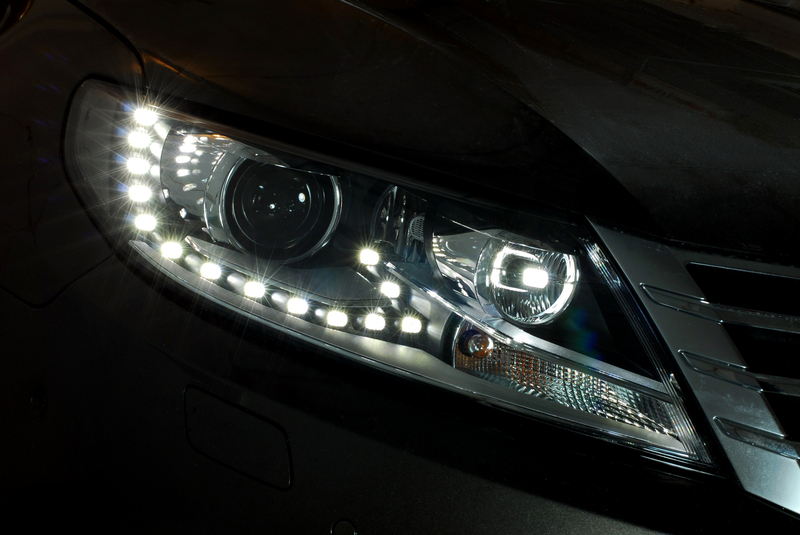Customizing your ride: Let there be LED light

Vehicle lighting has come a long way since Carl Fisher manufactured acetylene gas headlights for automobiles 100 years ago (see related story). A new generation of lighting is making its way into vehicles.
Welcome to the world of LED lighting. The bright, energy-efficient bulbs used for Christmas decorations and kitchen appliances are lighting up headlights, taillights and interior lighting.
How can you update your vehicle with this new-age lighting?
According to Joseph Verbanic, marketing manager for Sylvania Automotive, LED lighting may be installed on just about any new or older model vehicle. They also are designed for interior and exterior applications.
“You’re only limited by your imagination,” Verbanic said. “You can give your vehicle the kind of high tech look found in high end vehicles. LED retrofits may be used to replace incandescent bulbs in an existing fixture or by adding LED fixtures.”
Sylvania is one of the leading suppliers of vehicle light bulbs and systems. The company was founded in 1924 as a manufacturer of radio tubes and expanded into other industries such as electronic, telephony and automotive products.
Switching over to LED lighting is not always a simple as swapping out bulbs, however. Exterior lighting such as headlights and taillights must meet federal regulations for brightness, pattern and distance.
Simply swapping out existing headlight bulbs will not meet legal requirements, Verbanic said. The same is true for taillights.
“Interior lighting is the best place to start,” Verbanic said. “There are fewer regulations and no federally prescribed beam patterns.”
Verbanic suggested bulb replacements or adding additional lighting such as in door jams, cargo areas and roof lines. LED lights typically are high intensity, focused beams. They can provide additional light to read by.
“In a non-moving vehicle the benefits can be very helpful,” Verbanic said. “One drawback—in a moving vehicle the additional light may cause increased distractions or visibility problems for the driver."
“Ask yourself what you are trying to accomplish.”
For instance, are you trying to change the ambiance? Looking to add more light in the passenger cabin? Brightening dark corners?
“LEDs can help reading a map or directions, finding a cell phone or pacifier that fell on the floor and illuminating the cargo area. “
LED strips and fixtures allow drivers to add flair to door panels and thresholds. Vehicle and lifestyle logos may be personalized with changing colors and dimmable lighting.
“Whether it’s brightness or ambience you can achieve your goal through retrofitting existing assemblies or by adding lighting fixtures,” Verbanic said.
Where to start? Verbanic offered the following guidelines for drivers interested in the high tech look and benefits from LED lighting:
- LED lighting offers a good solution for personalizing the ambiance in your vehicle. LED lighting is small and flexible to fit in almost any space. It also offers a wide variety of colors.
- LED lighting strips can illuminate dark corners of your vehicle such as floor spaces, door jams and cargo areas. Use an experienced installer who knows how to make the correct connections to your vehicle's electrical system.
- Interior lights such as reading lights and glove compartment lights may be swapped out with LED replacement bulbs. Use LED bulbs designed as exact replacements for existing bulbs. Use compatible part numbers and read the packaging.
- Add-on kits allow you to customize the exterior of your vehicle through strips, fog lights and emblems.
- Headlights and tailights require a complete expensive change of assembly. You cannot simply replace existing bulbs with LED lights. It will not meet legal requirements and often requires adding other electrical components.
- Brightness caused by LED lighting may become a source of distraction for drivers. Consider where and how much light you want to add before making changes.
“If you can imagine it you can probably do it when it comes to LED lighting,” Verbanic said. “What your dad probably told you is true when it comes to LED lighting—you get what you pay for and quality products aren’t usually the cheapest ones on the shelf.”